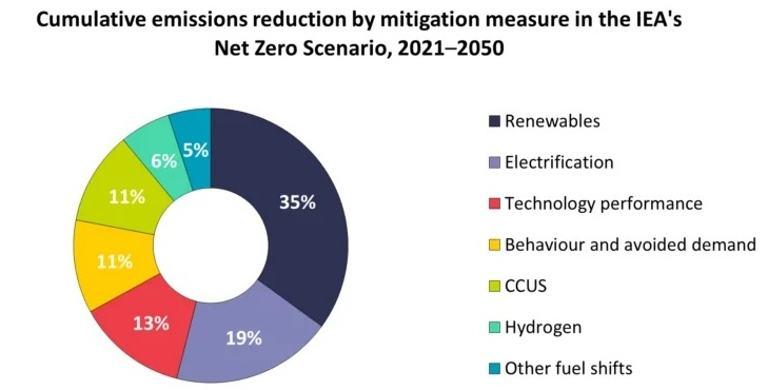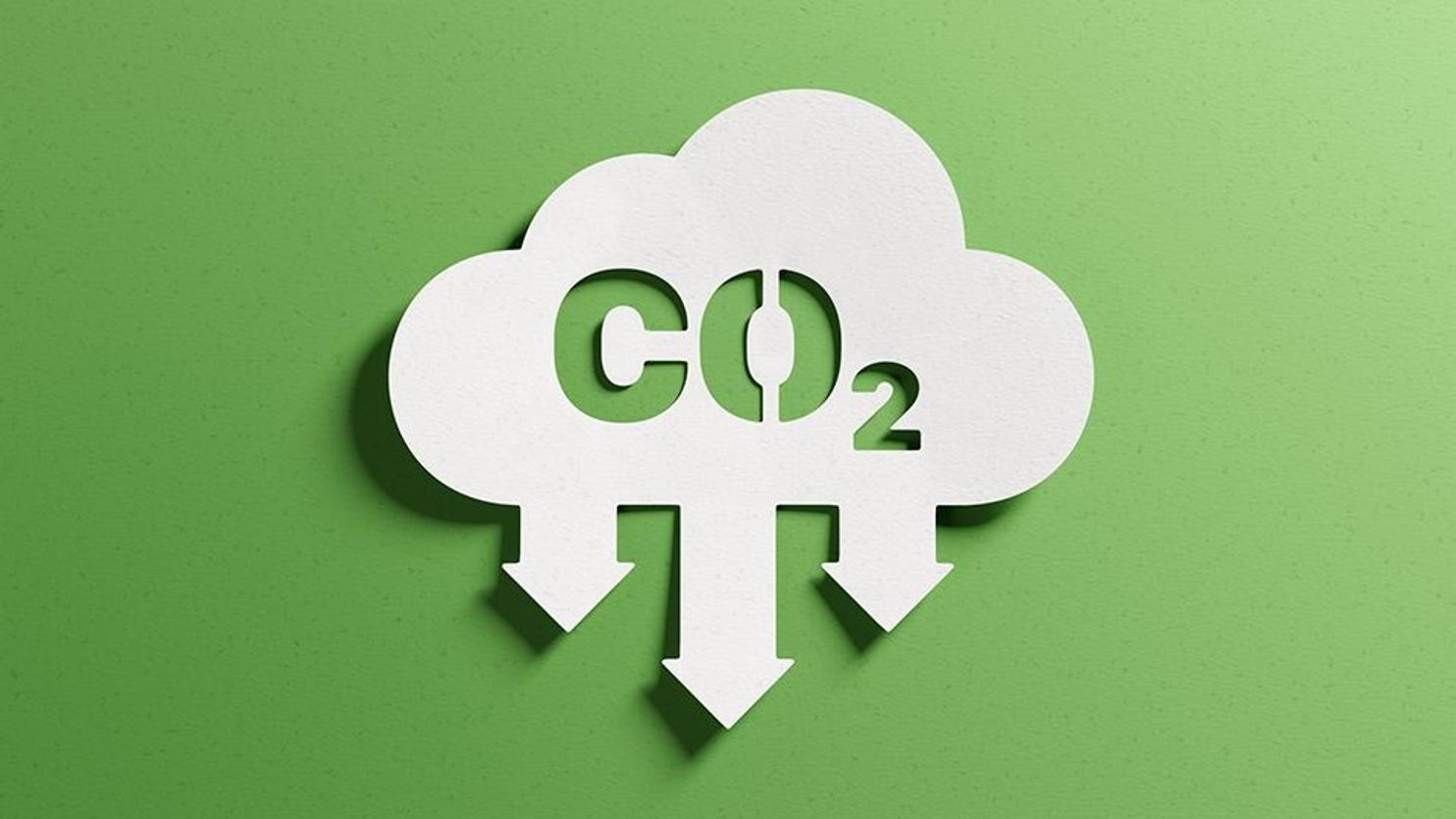In recent years, the technology industry has been confronted by an unprecedented challenge – the impact of technology on carbon emissions. By the end 2023, U.S. energy-related CO2 emissions will total 4,971 million metric tons (MMmt)—still 3% below the 5,144 MMmt of CO2 emissions generated in 2019
- Global tech related CO2 emissions grew in 2022 by 0.9%, or 321 million tones, reaching a new high of more than 36.8 billion tones
The rapid advancement of computer systems and automated manufacturing processes have been responsible for the increased production of carbon dioxide (also known as carbon dioxide), leading to unprecedented levels of global warming.
The results have been disastrous in many parts of the world, forcing political leaders to put a ban on drilling for gas and coal within the Arctic circle.
Similarly, carbon dioxide released in landfills have resulted in massive pollution problems in many cities around the world. However, there are solutions available, that can hopefully reverse the current trend and arrest the accelerating tide of global warming.
The end of financial year in 2020, green house carbon emissions had redcued by nearly 13% due to the Covid-19 outbreak. The two lockdown periods in Australia had temporarily reduced road activity and last April saw a drop in the use of pertolem consumption by 12.7%
The way in which the impact of technology on carbon emissions can be seen is through the reduction in the use of fossil fuel in the combustion of vehicles and other forms of transport. This is especially important today, as the cost of oil and gas continue to rise, and the potential for new oil reserves around the world are also becoming less clear.
Using technology such as electric cars, hybrid electric cars and other vehicles that run on alternative fuel sources has the potential to significantly reduce the impact of technology on carbon emissions. Alternative fuel vehicles do not have the same impact on the Earth’s climate as those that use fossil fuels do.
The recent advances in the field of science and technology are being credited to the impact of technology on carbon emissions. One of the main reasons for this is the fact that people have become much busier than ever before.
It has been reported that in the United States, people use transportation five times more than they did fifty years ago. This huge increase in the number of vehicles on the road has led to a serious increase in the amount of carbon emissions being produced.
Other significant sources of greenhouse gases emanate from the agricultural sector. In the last few decades, the increasing demand for meat, milk and cheese by the dairy and meat industry, has led to an explosion in the production of milk cows, leading to an increase in methane emissions.
Other greenhouse gas emissions from agricultural activities include manure management and fertilising practices. These, although relatively small in comparison with the production of methane and carbon emissions, have had a far greater impact on global warming. A major contributing factor to the increase in agricultural carbon emissions is the use of antibiotics.
The impact of technology on carbon emissions caused is also seen in the manufacturing sector. The increased use of machinery in the manufacture of goods, has lead to the manufacturing of products that are much more energy intensive, thereby causing a further rise in the output of greenhouse gases.
As a result, global warming, one of the most serious problems of the century, is becoming more severe. The use of such machinery also means that people are producing more waste, which is another major cause for the buildup of carbon emissions.
Another major area of concern regarding the impact of technology on carbon emissions is in the electricity sector. There is a widely held misconception that the use of fossil fuels like coal and oil is the only cause for the rising level of carbon emissions. In fact, technology plays a major role in reducing the impact of tech on carbon emissions.
Technology developments, like those used in solar energy, are making it possible for many households and companies to produce their own electricity without relying on state-sponsored electricity companies.
Many countries have taken steps to make electricity more independent from fossil fuel sources. However, in most developed countries, electricity produced using fossil fuel remains the dominant form of electricity.
It is also important to note that technology itself is changing rapidly. There have been many examples over recent years of new technology emerging, with new devices coming onto the market every day.
One way to keep up with this rapid pace of change is to use modern techniques in its development, as well as being prepared to adapt new technology when it is made available. The use of information technology is a good example of adaptation, as many homes are now fully equipped with computers, including laptops.
Other technologies that have also developed over recent years are wireless phones, cars that run on renewable energy and others. Adaptation means that we are not locked in to just one form of technology, but are ready to use as many as possible.
What is the carbon footprint for 2023?
By the end 2023, U.S. energy-related CO2 emissions will total 4,971 million metric tons (MMmt)—still 3% below the 5,144 MMmt of CO2 emissions generated in 2019 and 17% below the peak level of 6,016 MMmt in 2007.
What percentage of carbon emissions come from technology?
Various studies estimate them to be between 2.3 – 3.7 percent of global CO₂ emissions, which is equivalent to the emissions of the entire aviation industry. On an individual level, it is possible to estimate more precisely how high the CO₂ emissions are and how they can be reduced by simple means.
What technology do we need to cut carbon emissions?
To effectively limit global warming to 1.5°C and mitigate the severe consequences of climate change, the Intergovernmental Panel on Climate Change emphasises the urgent need for global carbon dioxide (CO2) emissions to reach net zero by the early 2050s.
The energy sector, responsible for approximately three-quarters of worldwide greenhouse gas emissions, holds particular importance in reducing these emissions.
While technology and innovation have played a crucial role in decreasing emissions from energy systems globally, their advancement must accelerate to achieve the global net zero targets.
The specific pathways for transitioning energy systems to net zero will depend on geographical, political, economic, and social circumstances in different parts of the world.
However, the overall strategy for cutting carbon emissions from the global energy system entails two primary objectives: (i) maximizing the electrification of energy demand and (ii) fully decarbonising electricity supply, primarily through the use of renewable sources.
According to the International Energy Agency’s (IEA) 2021–2050 Net Zero Scenario, electrification and renewables are the two most significant measures for mitigation, accounting for 54% of the necessary emissions reductions (refer to the figure below)

Technology performance and avoided demand
According to the IEA, a combination of electrification, renewables, nuclear power, carbon capture, utilisation, and storage (CCUS), and hydrogen can contribute to more than 70% of the necessary emissions reductions to achieve global net zero in the energy system by 2050.
These technologies offer significant potential for further emissions savings through enhanced technology performance and efficiency, resulting in an additional 13% reduction in emissions as per the IEA’s Net Zero Scenario.
Digitalisation and artificial intelligence (AI) also play a crucial role in optimizing the operation of energy systems and reducing overall energy demand by minimizing unnecessary consumption.
AI, in particular, is increasingly recognised as a transformative technology with substantial implications for data analytics, modeling, predictions, and improving efficiency and productivity in production processes and supply chains.
It’s important to note that not all reductions in avoidable energy demand depend on digital technologies alone. Energy-saving measures such as building retrofits, including loft insulation, window glazing, and upgrades to building fabric, can also result in significant energy savings.
Many homeowners are also choosing to install high-tech appliances, such as televisions, computers and washing machines, in order to cut down on the impact of technology on carbon emissions. Changing our lifestyles to suit technology is a continuous process and is likely to continue in the future.
Why data and AI must become more sustainable
With the increasing prominence of big data, machine learning, and artificial intelligence in the field of information technology, concerns are being raised about the environmental consequences associated with computation. Specifically, experts are highlighting the carbon footprint and greenhouse gas emissions attributed to data and AI.
This issue continues to escalate without any signs of slowing down, especially due to the exponential increase in data and AI deployment prompted by the COVID-19 pandemic and the growing demand for digital transformation.
A concerning report from MIT indicates that the carbon footprint of the cloud infrastructure now surpasses that of the entire airline industry. Additionally, a single data center can consume electricity equivalent to that of 50,000 homes.
Furthermore, the datasets utilised to train AI models are becoming increasingly massive, requiring significant amounts of energy to process. The MIT Technology Review also reveals that training a single AI model can result in emissions of over 626,000 pounds of carbon dioxide equivalent. To put this into perspective, it is nearly five times the lifetime emissions of an average American car.
It is crucial for enterprises to recognise the importance of addressing the contribution of data storage and AI to greenhouse gas emissions. It is necessary to find ways to mitigate the impacts of this ongoing problem.
List of 10 technologies impacting carbon emissions.
- Renewable Energy Sources: Technological advancements have made renewable energy sources such as solar, wind, and hydropower more accessible and efficient. Clean energy alternatives have reduced reliance on fossil fuels and subsequently lowered carbon emissions.
- Energy-efficient Appliances and Devices: Technological innovations have led to the development of energy-efficient appliances and devices. These products consume less energy during operation, resulting in reduced carbon emissions and lower overall energy consumption.
- Electric Vehicles (EVs): The rise of electric vehicles has significantly impacted carbon emissions in the transportation sector. EVs produce zero tailpipe emissions, reducing the carbon footprint associated with traditional gasoline-powered vehicles.
- Smart Grids and Energy Management Systems: Smart grids and energy management systems leverage technology to optimise energy distribution and consumption. These systems help balance energy demand, reduce wastage, and enhance efficiency, ultimately leading to lower carbon emissions.
- Internet of Things (IoT): The integration of IoT devices in various sectors enables better monitoring and control of energy usage. IoT-enabled sensors and devices can optimise energy efficiency, identify energy-saving opportunities, and reduce carbon emissions in industries, buildings, and transportation.
- Cloud Computing and Data Centers: Cloud computing offers more energy-efficient data storage and processing compared to traditional on-site servers. Centralised data centers with advanced cooling technologies and optimised energy consumption contribute to lower carbon emissions associated with data storage and computation.
- Carbon Capture, Utilisation, and Storage (CCUS): Technology plays a crucial role in carbon capture, utilisation, and storage processes. Innovative techniques are being developed to capture carbon emissions from industrial processes, power plants, and other sources, reducing their impact on the environment.
- Sustainable Manufacturing and 3D Printing: Technology-driven advancements in manufacturing processes have enabled sustainable practices. 3D printing, for example, reduces material waste and energy consumption, resulting in lower carbon emissions compared to traditional manufacturing methods.
- Remote Work and Virtual Meetings: The adoption of remote work and virtual meeting technologies has reduced the need for physical travel. By minimising commuting and business travel, technology has contributed to decreased carbon emissions associated with transportation.
- Data Analytics and Predictive Models: Advanced data analytics and predictive models enable businesses and industries to optimise their operations, reduce energy waste, and identify areas for emission reductions.
Samsung Wins The Worlds Highest Tech CO2 Producer
Which technology industry giants contribute the most to carbon emissions? According to Statista, there are over 6.5 billion smartphones and at least 1.2 billion tablet devices in circulation worldwide.
Although everyday tech may not immediately appear harmful to the environment, the production of these devices involves intricate supply chains that indirectly hold the largest organizations in the industry accountable for millions of tons of carbon pollution.
Research studies indicate that Samsung, ranked as the 27th largest global business by market capitalisation, is the leading emitter of emissions among tech companies.
In 2021, Samsung generated 20.1 million metric tons of CO₂e, surpassing all others. This emission level is equivalent to the annual output of 4.3 million cars on the road, as estimated by the Environmental Protection Agency (EPA).
To address this issue, Samsung has committed to achieving a net-zero strategy by 2050 and has allocated over $5 billion towards decarbonizing their consumer electronics operation.
Another significant carbon polluter in the tech industry is Amazon, which emitted 16.2 million metric tons of CO₂e in 2021. Despite a 2019 pledge by former CEO Jeff Bezos to significantly reduce the company’s emissions and achieve carbon neutrality by 2040, Amazon’s carbon footprint increased by 18% in 2021
Extended Summary Conclusion
As the urgency for achieving a net zero future intensifies, ongoing advancements in emissions reduction technologies play a pivotal role. Carbon offsetting emerges as a vital approach to ensure the financial viability of carbon reduction projects and initiatives.
- The integration of technologies such as blockchain and the Internet of Things (IoT) brings innovation to emission monitoring and reporting, enhancing transparency throughout supply chains and enables comprehensive tracking of emission reduction endeavors.
- As global carbon dioxide (CO2) emissions reached a staggering 36 billion tons in 2021, urgent action on climate change has become imperative.
- Reports from the UN’s Intergovernmental Panel on Climate Change (IPCC) emphasise the crucial need to reduce carbon pollution to mitigate the catastrophic impacts of a 1.5°C temperature rise.
- The technology industry, responsible for approximately two to three percent of global carbon emissions, must shoulder its share of responsibility. The UN’s Environment Programme states that this carbon footprint is on par with the emissions from the aviation sector.
- Leading tech giants like Google and Meta have already committed substantial financial resources, totaling $925 million, to achieve carbon removal as part of a broader industry collaboration.
While the tech industry has a significant role to play in spearheading global efforts toward carbon neutrality, the dominance of major players in the market ultimately influences the sector’s green aspirations.
Changing our lifestyles to suit technology is a continuous process, and is likely to continue from 2023 and beyond.







